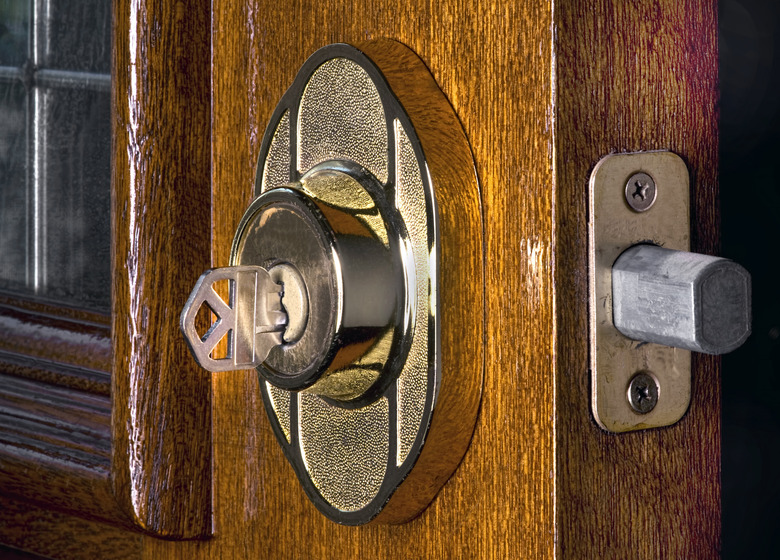How To Pick A Deadbolt Lock
It's easy to pick a deadbolt lock. In fact, when you find out how easy it is, you might want to replace all your keyed locks with electronic ones. This isn't to say that lock picking doesn't require skill and practice — it does — but the technique is so simple that anyone can understand it.
What Do You Need to Pick a Deadbolt?
You can pick any keyed deadbolt lock with two basic tools. The first is the pick itself, which is a long, rigid piece of metal or plastic that fits easily into the keyhole and won't bend easily when you push it against something. The other is a tension wrench fashioned by making a 90-degree bend in the end of another thin, rigid piece of metal or plastic.
You can fashion both of these tools from household supplies. The most common are paper clips, bobby pins and electrical wire, but in a pinch, implements such as tooth-flossing handles can also work. Bobby pins probably work the best.
If the weather is cold, you might also need a means to de-ice the lock because you won't be able to turn it if it's frozen. A lighter will work, as will a hair dryer or heat gun. If you don't have anything, you can always try breathing on the lock for a couple of minutes.
How to Make the Pick and the Wrench
You can make a bobby pin lock pick out of two bobby pins or by breaking a single one into two equal pieces. To make the pick, which is just a straight piece of wire, remove the protective rubber nib from the tip and straighten out the bobby pin. To make the wrench, bend the end of the pin (using pliers, if you have some) to make a 90-degree angle. If you're making the wrench out of an entire bobby pin, it will be stronger if you bend the head of the pin and not the tips.
You can also make the pick and wrench from a pair of paper clips or a single one broken in half. If you have some spare electrical wire in the garage, you can also use that. Be sure to strip off the insulation first.
Lock-Picking Procedure
The lockset inside a deadbolt lock consists of a rotating barrel and five spring-loaded pins that fit into the barrel to prevent it from turning. The key pushes these pins up and out of the barrel, and that's what you're going to do with the pick. The purpose of the wrench is to keep tension on the barrel so it will prevent the pins from dropping back into the barrel after you move them up and out.
Lock-Picking Steps
- Insert the short end of the wrench into the bottom of the keyhole and put tension on the wrench handle in the direction the lock turns. Maintain this tension while you're picking.
- Poke the pick into the top of the lock and push until you feel one of the pins. Use the end of the pick to jimmy the pin up and then push the pick in farther until you contact the nest pin. Eventually, you'll contact one of the pins that is harder to lift than the others. This is why you need the tension wrench.
- Lift the pin while keeping tension on the wrench. When the pin clears the barrel, the barrel will move slightly, and that slight movement is enough to prevent it from falling back.
- Keep pushing the pin deeper and jimmying up the pins until you've lifted all of them. At this point, you should be able to turn the lock with the wrench.
